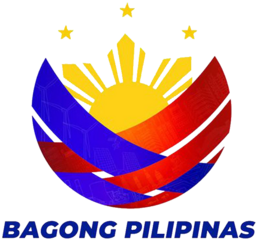disseminated within the scientific community. It advocates for transparency in the research process, promotes open access to scholarly publications, encourages collaboration and interdisciplinary research, and engages the public in the scientific process.
Further, communication in open science upholds effective dissemination of research findings and emphasizes on engaging a wide range of stakeholders, including policymakers, industry professionals, and the general public. It likewise leverages various platforms such as social media and mainstream media in order to reach a broader audience and bridge the gap between researchers and the public.
As the mandated national coordinating agency for agriculture and fisheries research and development, the DA-Bureau of Agricultural Research (BAR) consistently emphasizes effective communication as a crucial element in ensuring the success of the research projects and programs it supports.
Exploring further into the realms of open science
The United Nations Educational, Scientific and Cultural Organization defines open science as a way of doing research that aims to share scientific findings with everyone. Beyond the lines of making knowledge available, open science makes the process of creating knowledge inclusive, fair, and lasting, benefiting both scientists and society. By promoting transparency, collaboration, and accessibility and availability of generated technologies, open science has its inevitable niche in advancing research, particularly in areas like climate change, health, and food security. Considering the complexity and significant societal and economic impacts of these issues, it also fosters collaboration and communication across disciplines and governments. Embracing open science principles enables scientists and researchers to access and share data openly, enhancing the accessibility and application of academic research. This is especially advantageous for developing nations with limited resources. Through open science, research results reach a broader audience through various channels, allowing the public, institutions, and policymakers to contribute to solutions and develop insights and strategies. To ensure the continuous flow of scientific information, it's important to establish safeguards for managing intellectual property.
Establishing effective communication in agri-fisheries R4DE
From initial planning stages to implementation and results dissemination, DA-BAR actively collaborates with its stakeholders - communities, research institutions, policymakers, and, most importantly, farmers and fisherfolk, by regarding them as knowledge partners. Through this, they become engaged and encouraged to collectively craft questions then eventually, devise solutions. This collaborative approach is evident in the consultation process undertaken for the development of the National Agricultural and Fisheries Research for Development and Extension Agenda (NAREA) 2023-2028. NAREA serves as the primary reference guiding DA-BAR's prioritization and support for research and development programs, projects, and activities in the upcoming medium term.
DA-BAR is committed to ensuring that agricultural research serves farmers and fisherfolk effectively. The bureau believes that making technologies—whether products, processes, or information—accessible is crucial for them to benefit from these advancements.
To achieve this, DA-BAR employs various strategies to communicate science-based information. It actively involves local partners, especially farmers and fisherfolk cooperatives and associations, in planning, implementing, monitoring, and assessing our initiatives. This participatory approach ensures that their concerns are at the forefront, and solutions are tailored to their needs and capabilities.
It's important to note that the agricultural research and development community has already generated numerous technologies over time. The bureau leverages this wealth of past research to prioritize and assess what has been accomplished. By collaborating and examining existing technologies, DA-BAR not only plans for the future but also enhances research areas based on sustainable growth.
DA-BAR evaluates the technologies obtained to determine if they are ready for commercialization or if further verification or upscaling is needed. This process allows us to showcase the achievements of past research and sets the direction for future endeavors. In essence, it builds upon the progress made in the past to guide our ongoing and future efforts in agricultural research and development.
Incorporating open science and communication in the grants process
In the light of grants provision, funding agencies have the option to mandate or incentivize proponents and implementing agencies to establish a framework ensuring transparent reporting and easy accessibility of research findings, data, and methodologies. The criteria for this framework may encompass transparency, involving the full disclosure of potential conflicts of interest, along with accessibility and reproducibility of research outputs resulting from publicly funded research. In return, funders may reward and support researchers for their contributions to open science through Incentives, increased funding opportunities, job opportunities, and more collaborations.
As a funding agency, the DA-BAR promotes networking and collaborative projects through the Agriculture and Fisheries Resources, Research and Extension for Development Network (AFRREDN), which serves as the major partnership mechanism for R4DE stakeholders at the national and regional levels. It facilitates efficient utilization of national R4DE institutions’ critical interventions through strong collaborations among members addressing local industry needs. Further, the bureau promotes partnership/linkages with international R4D organizations through information exchange, capacity building, and collaborative studies on jointly-decided specific areas of cooperation.


